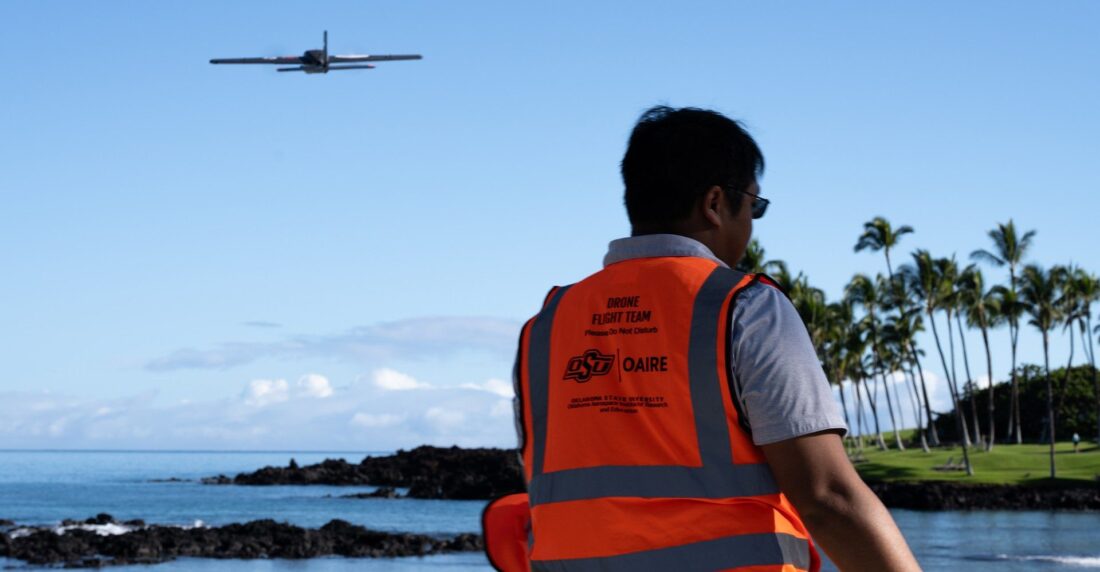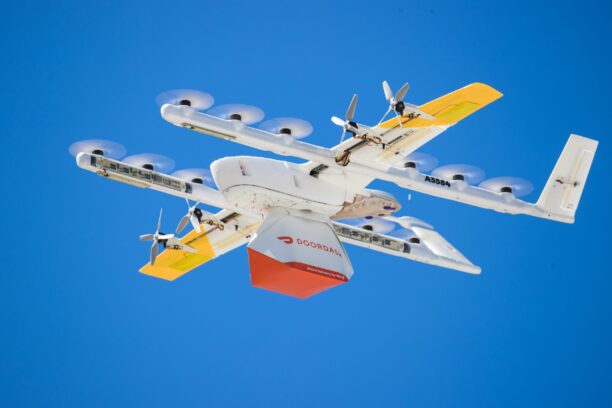
Progressive UAV Design Permits Scientists to Gather Organic Samples from Dolphins With out Disturbing Them
by DRONELIFE Options Editor Jim Magil
Scientists learning dolphins have lengthy been confounded by the issue of the way to assess the well being of those animals within the wild. However because of a drone-based system designed by researchers in Texas and Oklahoma, scientists might quickly be diagnosing the bodily features of those mammals in the midst of the ocean.


About seven years in the past, Professor Jason Bruck, whose work contains the examine of cetaceans — the order of marine animals that features whales, dolphins and porpoises – was confronted with an issue. Though on the time, drones such because the Snotbot, developed by Massachusetts- primarily based Ocean Alliance and Olin Faculty of Engineering, had been in use for a number of years to measure the well being of whales, the expertise was not appropriate for the examine of smaller cetaceans.
The Snotbot system works by flying a quadcopter by way of the spray shot out of the blow gap on the whale’s again to gather organic samples.
“Since an enormous whale breathes 50 ft into the air, that’s simple to do,” stated Bruck, who at the moment works as an assistant professor of biology at Stephen F. Austin State College in Nacogdoches, Texas. “However once they tried to make use of a few of these strategies in small cetaceans, like dolphins and porpoises it didn’t work.”
One drawback was that in contrast to whales, which largely ignore the quadcopter buzzing above them, dolphins are rather more delicate to the presence of airborne objects, and their accompanying noise, within the animal’s surroundings. A second drawback concerned the downdraft from the quadcopter’s rotors, which might dissipate the plume from the porpoise’s blowhole, fairly than permitting it to be collected.


“So, you may’t acquire these organic samples by simply flinging Petri dishes on an Encourage and hoping for the most effective. So, we appeared on the drawback and stated, ‘Okay, how can we remedy this?’” he stated.
Whereas he was wrestling with this dilemma, Bruck transferred from the College of St. Andrews in Scotland, the place he was finishing his post-doctoral work, to Oklahoma State College, the place he labored for a time as a visiting assistant professor. Whereas at OSU, he met up with members of that college’s drone analysis workforce, who had been engaged on creating quieter drones. “That’s one factor you’d undoubtedly must do with a drone that was supposed to gather a breath pattern from a bottlenose dolphin,” he stated.
Jamey Jacob, an OSU division chair and professor of mechanical and aerospace engineering, picks up the story.
“Jason approached us when he was right here within the Division of Integrative Biology at OSU,” Jacob stated. “He introduced this concept to us and stated, ‘It is a problem and we’d prefer to see in case your college students within the aerospace engineering program can work on an answer for this.’”
The OSU drone workforce began engaged on an unmanned aerial automobile design that was “stealthy” sufficient to method a dolphin with out disturbing the animal.
“Their eyes sit on each side of their head. However we discovered that immediately behind them, they’ve a blind spot,” Jacob stated. As soon as they decided how the drone ought to method the animal, the workforce’s subsequent problem was to provide you with a drone design that solved the noise drawback.
“We discovered fairly shortly that they may simply hear issues resembling small quad rotors and that they’d react to them in the event that they heard the noise.” The workforce quickly deserted the quadcopter design and started engaged on a fixed-wing unmanned plane that was quieter than a quadcopter and had the additional benefit of getting the endurance to fly miles out over the ocean to the place a pod of dolphins might be discovered.
Beneath the mission dubbed PHASM, or Passive Well being Evaluation for Sea Mammals, and utilizing off-the-shelf drone parts, OSU the workforce constructed an electrical vertical takeoff and touchdown (EVTOL) plane, which might be hand-launched from a ship at sea and guided to its goal through first-person view expertise. On its return flight to the boat the drone operators would use a web to catch the plane and convey it again on board.

The workforce gave every model of the drone a pet title to tell apart it from earlier fashions. “Flipper, for instance, was the latest one which we used,” Jacob stated.
Bruck stated the ultimate model of the plane his colleagues designed was a modified HEEWING T2 Cruza. “However every thing about it was gutted and, and all new electronics had been put in and a complete new nostril cone, to include the siphon, was put in,”
The siphon is the drone’s essential piece of kit, specifically designed to seize the small quantity of chuff exhaled by way of the dolphin’s blowhole. “It has an iris on it, which opens up like a flower. After which the vacuum sucks the breath in,” he stated.
To make sure that the siphon would be capable of acquire samples of chuff from dolphins within the wild, the OSU workforce created a chuff simulator within the laboratory, that may expel an identical quantity of fabric into the air as a stay animal would. The workforce carried out flight assessments within the laboratory and on the OSU’s drone flight discipline in Stillwater, Oklahoma, earlier than transferring on to conduct assessments on stay dolphins at Dolphin Quest, a industrial vacationer attraction, in Oahu, Hawaii.
Bruck stated that with the testing efficiently accomplished the researchers hope to safe approval from the Nationwide Oceanic and Atmospheric Administration to be used of the expertise on the open sea inside the subsequent month or so. Plans name for the analysis workforce to start drone flights to check the susceptible dolphin inhabitants in Galveston Bay by December or early January.
“It’s a inhabitants of about 160-plus animals that doesn’t go anyplace. They may by no means depart,” he stated. “So, the thought could be to exit in a ship and discover the animals.”
Learn extra:

 Jim Magill is a Houston-based author with virtually a quarter-century of expertise overlaying technical and financial developments within the oil and fuel trade. After retiring in December 2019 as a senior editor with S&P World Platts, Jim started writing about rising applied sciences, resembling synthetic intelligence, robots and drones, and the methods by which they’re contributing to our society. Along with DroneLife, Jim is a contributor to Forbes.com and his work has appeared within the Houston Chronicle, U.S. Information & World Report, and Unmanned Techniques, a publication of the Affiliation for Unmanned Automobile Techniques Worldwide.
Jim Magill is a Houston-based author with virtually a quarter-century of expertise overlaying technical and financial developments within the oil and fuel trade. After retiring in December 2019 as a senior editor with S&P World Platts, Jim started writing about rising applied sciences, resembling synthetic intelligence, robots and drones, and the methods by which they’re contributing to our society. Along with DroneLife, Jim is a contributor to Forbes.com and his work has appeared within the Houston Chronicle, U.S. Information & World Report, and Unmanned Techniques, a publication of the Affiliation for Unmanned Automobile Techniques Worldwide.
Miriam McNabb is the Editor-in-Chief of DRONELIFE and CEO of JobForDrones, knowledgeable drone providers market, and a fascinated observer of the rising drone trade and the regulatory surroundings for drones. Miriam has penned over 3,000 articles centered on the industrial drone house and is a global speaker and acknowledged determine within the trade. Miriam has a level from the College of Chicago and over 20 years of expertise in excessive tech gross sales and advertising for brand spanking new applied sciences.
For drone trade consulting or writing, E-mail Miriam.
TWITTER:@spaldingbarker
Subscribe to DroneLife right here.







